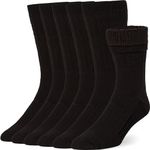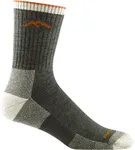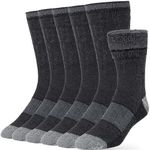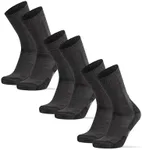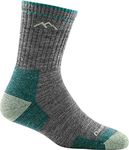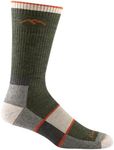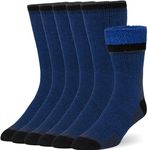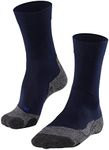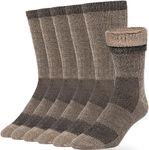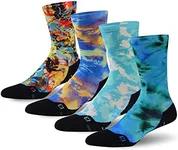Buying Guide for the Best Winter Wool Socks
Choosing the right winter wool socks is essential for keeping your feet warm, dry, and comfortable during the cold months. Wool socks are known for their excellent insulation, moisture-wicking properties, and durability. When selecting the perfect pair, it's important to consider several key specifications to ensure they meet your needs and preferences. Here are the key specs to look out for and how to navigate them.Material CompositionMaterial composition refers to the types of fibers used in the socks. Wool is the primary material, but it is often blended with other fibers like nylon, polyester, or spandex to enhance durability, stretch, and fit. Pure wool socks offer the best warmth and moisture-wicking properties, but blends can provide added strength and elasticity. If you need maximum warmth and natural properties, go for higher wool content. For a balance of durability and comfort, a blend with synthetic fibers might be ideal.
ThicknessThickness determines the level of insulation and cushioning provided by the socks. Thicker socks offer more warmth and padding, making them suitable for extremely cold conditions or outdoor activities like hiking. Medium thickness is versatile for both indoor and outdoor use, providing a good balance of warmth and comfort. Thinner socks are better for everyday wear and fit well in tighter shoes. Choose the thickness based on your activity level and the temperatures you expect to encounter.
Fit and SizeFit and size are crucial for comfort and performance. Socks that are too tight can restrict circulation, while those that are too loose can cause blisters and discomfort. Wool socks often come in standard shoe sizes, but it's important to check the sizing chart of the brand. Look for socks with a snug fit that still allow for some movement. Consider your foot shape and any specific needs, such as extra room for wide feet or additional support for high arches.
Moisture-Wicking PropertiesMoisture-wicking properties refer to the sock's ability to draw sweat away from your skin and keep your feet dry. Wool naturally has excellent moisture-wicking abilities, but some blends enhance this feature. This is important for preventing blisters and maintaining comfort during prolonged wear. If you have sweaty feet or plan to engage in physical activities, prioritize socks with high moisture-wicking capabilities.
DurabilityDurability indicates how well the socks can withstand wear and tear over time. Wool socks with reinforced heels and toes tend to last longer, especially if you plan to use them for outdoor activities. Blends with synthetic fibers like nylon can also enhance durability. If you need socks for heavy use, look for those with added reinforcement and high-quality construction.
CushioningCushioning refers to the padding provided in the sock, which can enhance comfort and reduce impact on your feet. Heavily cushioned socks are great for high-impact activities and provide extra warmth. Lightly cushioned socks offer a balance of comfort and breathability, suitable for everyday wear. Choose the level of cushioning based on your comfort preference and the type of activities you plan to do.
Odor ResistanceOdor resistance is the sock's ability to prevent the buildup of unpleasant smells. Wool naturally has antimicrobial properties that help reduce odor, but some socks are treated with additional odor-resistant technologies. This is particularly important if you plan to wear the socks for extended periods or during intense activities. If odor control is a priority for you, look for socks with enhanced odor-resistant features.
